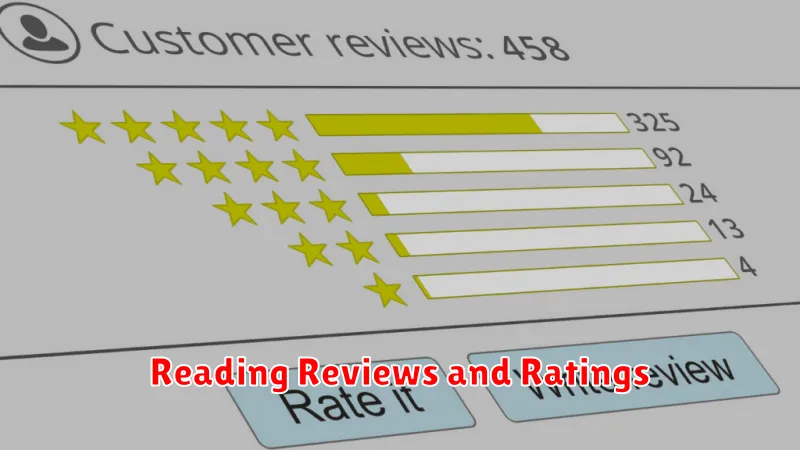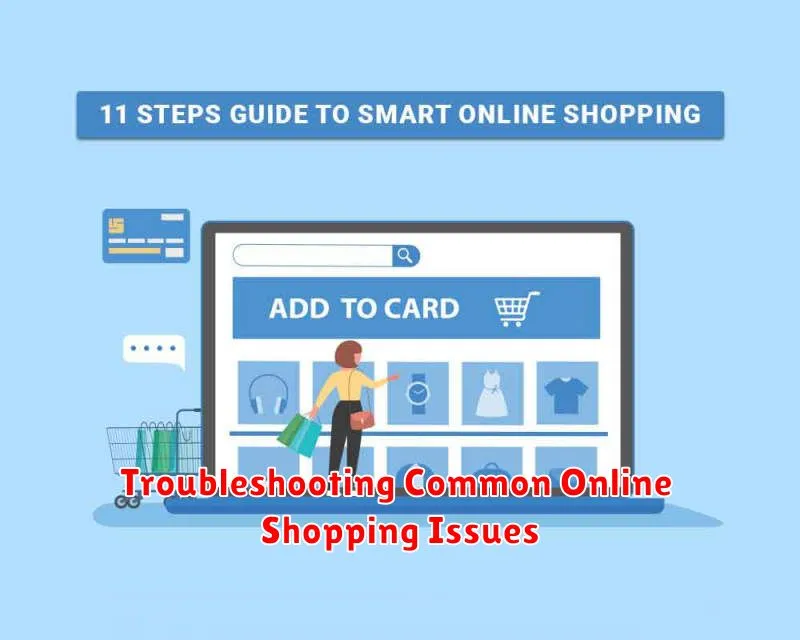Venturing into the world of online shopping for the first time can feel both exciting and overwhelming. With a vast array of products, retailers, and platforms available, navigating this digital marketplace can be daunting for first-time buyers. This comprehensive guide aims to demystify the process, providing you with the essential knowledge and tools to confidently embark on your online shopping journey. From understanding online security measures to mastering the art of finding the best deals, this resource will equip you with everything you need to become a savvy online shopper.
This guide will cover crucial aspects of the online shopping experience, including creating accounts, browsing product catalogs, comparing prices, understanding shipping costs, and navigating return policies. We’ll delve into the importance of secure payment methods, identifying reputable online retailers, and protecting yourself from online fraud. By the end of this guide, you’ll be empowered to make informed purchasing decisions, unlock the convenience of online shopping, and enjoy the myriad benefits it offers to first-time buyers and experienced shoppers alike.
Navigating the Online Marketplace: Finding What You Need
The vastness of the online marketplace can feel overwhelming for first-time buyers. Effectively navigating this digital landscape requires understanding the tools available. Search bars are your primary starting point. Using precise keywords will yield more focused results. For example, searching for “red leather women’s boots size 8” will provide more targeted results than simply “boots”.
Filters further refine searches. Most online retailers allow you to filter by price, brand, size, color, and other relevant attributes, narrowing down the options to match your specific needs. Explore different filter combinations to discover products you might not have considered otherwise.
Category browsing is another helpful approach. Most websites organize products into categories and subcategories. This is particularly useful when you have a general idea of what you’re looking for but haven’t settled on specific details. Browsing through relevant categories can expose you to a wider range of options.
Understanding Product Listings and Descriptions
Product listings are the online storefront’s equivalent of a product display. Each listing provides essential information to help you make informed purchasing decisions. Carefully review these details before adding an item to your cart.
Product titles should clearly state what the item is. Look for specifics like brand, model, size, or color. Descriptions provide more in-depth information about the product’s features, specifications, and uses. Pay close attention to these details to ensure the product meets your needs.
Images are crucial for visualizing the product. Examine multiple photos from various angles to get a good sense of its appearance and size. Some listings may also offer videos showcasing the product in use. Read customer reviews. These offer valuable insights from other buyers and can provide a more realistic perspective on the product’s quality and performance.
Comparing Prices and Deals for the Best Value
Getting the best bang for your buck is a top priority when shopping online. Comparison shopping is key to finding the most competitive prices. Don’t settle for the first price you see. Utilize price comparison websites and browser extensions that automatically compare prices across different retailers. These tools can save you time and money by quickly identifying the lowest price for the same product.
Look beyond the price tag and consider the total cost. Factor in shipping fees, taxes, and any potential return shipping costs. A seemingly lower price might become less attractive once these additional expenses are added.
Be aware of deals and discounts. Look for coupon codes, promotional offers, and sales events. Sign up for email alerts from your favorite retailers to stay informed about upcoming sales and exclusive discounts.
Secure Payment Methods for Online Transactions
Security is paramount when engaging in online transactions. Understanding the various payment methods and their safety features is crucial for a positive shopping experience.
Credit cards are a widely accepted payment method, offering robust fraud protection. Look for indicators like the padlock icon in the address bar and “https” to ensure the website is secure. Many credit card companies also provide purchase protection and dispute resolution services.
Debit cards offer similar convenience but draw directly from your bank account. Exercise caution when using debit cards online and ensure your bank provides strong security measures.
Digital wallets, such as PayPal, Apple Pay, and Google Pay, offer an added layer of security by tokenizing your card information. This means your actual card details are not shared with the merchant, reducing the risk of fraud.
Prepaid cards are another option, allowing you to load a specific amount for online purchases. These can be a good choice for controlling spending and limiting potential losses in case of fraud. However, be aware of fees associated with some prepaid cards.
Shipping Options and Delivery Times
A crucial aspect of online shopping is understanding the available shipping options and their associated delivery times. Shipping costs and delivery speed can vary significantly between retailers and depend on several factors, including the item’s size, weight, and destination.
Common shipping options include standard shipping, expedited shipping, and overnight shipping. Standard shipping typically takes the longest but is the most economical choice. Expedited shipping offers faster delivery at a higher price. Overnight or next-day delivery is the quickest option, often used for urgent orders, but comes at a premium cost.
Delivery times are typically estimated and provided by the retailer during checkout. These estimates can be affected by factors like weekends, holidays, and unforeseen circumstances such as weather delays. Some retailers offer tracking numbers so you can monitor your package’s progress online. Pay close attention to the estimated delivery window and choose the shipping method that best meets your needs and budget.
Safeguarding Your Personal Information While Shopping Online
Protecting your personal information is paramount when shopping online. Strong passwords are your first line of defense. Create unique, complex passwords for each online account, combining uppercase and lowercase letters, numbers, and symbols. Avoid using easily guessable information like birthdays or pet names.
Secure websites utilize HTTPS, indicated by a padlock icon in the address bar. This encryption protects your data as it travels between your computer and the website. Before entering any sensitive information, always verify the presence of HTTPS.
Be wary of phishing scams. Legitimate businesses rarely request personal information via email. If you receive a suspicious email asking for your login credentials or financial details, contact the company directly through their official website or phone number to verify its authenticity.
Regularly monitor your financial statements for any unauthorized activity. If you detect any suspicious transactions, immediately contact your bank or credit card company to report the issue.
Returns and Refunds: Understanding Your Rights
Navigating returns and refunds can feel tricky. Understanding your rights as a consumer is paramount for a positive online shopping experience. Policies vary between retailers, so always check the specific return policy before finalizing your purchase. Look for details regarding the return window, which is the timeframe within which you can return an item.
Most retailers offer a full refund for items returned in their original condition, with tags attached and original packaging intact. Some may deduct a restocking fee, particularly for electronics or larger items. Familiarize yourself with these potential costs beforehand.
Shipping costs related to returns are another crucial aspect. Some retailers offer free return shipping, while others require the customer to bear the expense. In cases where the return is due to a defect or an error on the retailer’s part, they should cover the return shipping costs. Ensure you retain proof of postage and tracking information for your returned items.
If you encounter issues with a return or refund, contact the retailer’s customer service department. Maintaining clear and respectful communication is essential for resolving any disputes effectively. Remember to keep records of your communications, including email exchanges and order confirmations, for reference.
Reading Reviews and Ratings

Before committing to a purchase, thoroughly examine product reviews and ratings. These offer valuable insights from other customers who have already purchased and used the product. Pay attention to both the average rating and the distribution of ratings (how many 5-star, 4-star, etc.).
Look for recurring themes and issues within the reviews. Do multiple reviewers mention the same problem? This could indicate a genuine product flaw. Conversely, consistent praise for a specific feature can confirm its value.
Consider the source of the reviews. Are they from verified purchasers? Websites often indicate verified purchases with a badge or label. This adds a layer of credibility to the review.
Don’t solely rely on the most positive or most negative reviews. Focus on the overall consensus and look for reviews that align with your specific needs and priorities. Some reviews might mention aspects of the product that are important to you, like size or durability.
Troubleshooting Common Online Shopping Issues

Occasionally, you might encounter hiccups during your online shopping journey. This section offers solutions to common problems.
Website Errors
If you experience website errors like “Page Not Found” or slow loading times, try refreshing the page or clearing your browser’s cache and cookies. If the issue persists, it might be a problem on the retailer’s end. Contact their customer support for assistance.
Payment Problems
Declined payments can be frustrating. Double-check your card details for accuracy. Ensure sufficient funds are available. If the problem continues, contact your bank or card provider to verify there are no issues with your account.
Order Tracking Difficulties
If you’re unable to track your order, refer to your order confirmation email for the tracking number and designated shipping carrier. If the tracking information is unavailable or inaccurate, reach out to the retailer’s customer service for an update.

